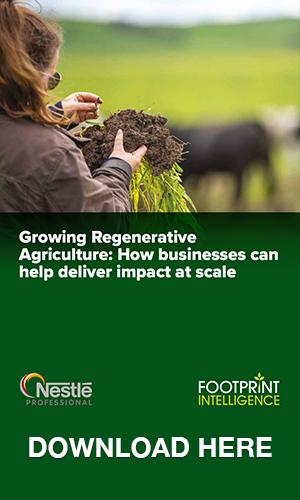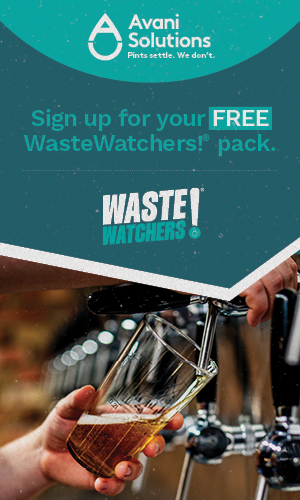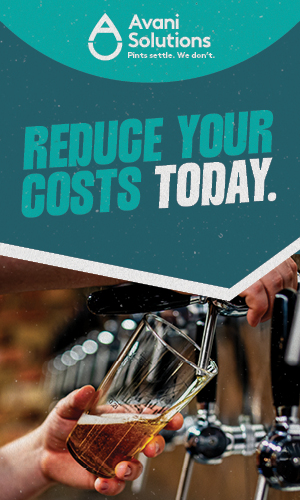How can Keurig Dr Pepper report a 12% reduction in scope 3 emissions when they’ve actually increased by 14%? David Burrows reports.
If more companies commit to measuring and reporting publicly on their sustainability performance, four things should happen. ESG performance should improve; more ‘sustainable’ companies should be rewarded; a link tying companies with better ESG records to better equity returns should emerge; and the measurements and reporting should become more rigorous. “Over time, this virtuous cycle would result in a more sustainable form of capitalism,” wrote professor Kenneth Pucker from Tufts University, Massachusetts, in an HBR paper in June 2021.
If only. I will often spend a morning perusing a new impact report or ESG update from a major food or drink corporate. Sometimes I switch off after the first few pages. Occasionally I discover some truly transparent reporting. Rarely do I witness a suitably simple approach that sorts the nuance of an issue into a format anyone can enjoy. Most often I grumble after quickly stumbling across something suspicious.
Of course I view these reports with the critical eye of someone who has been reading them for more than a decade. I have become quite well versed in the tricks and tactics used to portray a picture rather than share the real story. There are others – far more experienced in statistics and sustainability than me – that will go layers deeper, chewing through the numbers that are there and the ones that are not. The methods are meticulous; the results disquieting.
But it doesn’t take a statistics sleuth to spot problems in some of these reports. And that’s what worries me. Is the assumption that readers of ESG material are stupid?
Pop’s weasel
Last month, the 2023 corporate responsibility report from Keurig Dr Pepper (KDP), owner of Dr Pepper and 7Up, landed in my inbox.You will not be surprised to hear that my attention at such times tends to be drawn towards net-zero and packaging items.
“KDP continues to make significant progress on its 2030 goals to reduce scope 1 and 2 emissions by 30% and scope 3 emissions in select categories by 15% compared to 2018,” the update noted. Hang on a minute, I thought: “select categories”, that’s an interesting turn of phrase, especially in relation to scope 3. I read on: “For 2023, the company reports a 21% reduction in scope 1 and 2 emissions and a 12% reduction in scope 3 emissions in select categories, driven by actions such as renewable electricity purchases and advancing fleet electrification with 18 electric vehicles deployed in Canada.” And there it is again: “select categories”.
On the website, where you can find the report in full, there is a list of targets and the one relating to scope 3 greenhouse gas emissions says, “2030: Reduce scope 3 emissions in select categories by 15%.” Consider my curiosity piqued.
For those not familiar with reporting on scope 3 emissions, there are 15 categories listed in the GHG Protocol (developed with the Carbon Trust). For food and drink companies some tend to be large buckets of CO2e and others much smaller ones. Category 1, ‘Purchased goods and services’, is usually the biggy for food and drink firms: “This category includes all upstream (i.e. cradle to gate) emissions from the production of products purchased or acquired by the reporting company in the reporting year,” reads the protocol.
Which means the categories you include and the categories you exclude are pretty important. KDP’s report shows the captured categories as: purchased goods and services (PET and glass packaging), fuel and energy-related activities, upstream transportation and distribution and the use of sold products. So, emissions in those have come down 12% since the baseline of 2018. But try calculating (or checking) that against the emissions data available on page 54 of the report and you can’t.
Why? A spokesperson explains: “KDP reports the emissions for all of our purchased goods and services, as shown on page 54 of the report. However, our science-based target for scope 3 emissions reductions only includes PET and glass packaging emissions from the purchased goods and services category.”
In other words that reporting and reduction of emissions against “selected categories” in scope 3 has now become even more selective. You have to download KDP’s latest report to CDP on climate in order to get to the bottom of this (and CDP disclosure reports are the least accessible sustainability reports I have ever come across, designed it seems to put people off rather than point them towards the information that’s important).
KDP’s latest CDP submission shows the 12% reduction in scope 3 relevant categories within the ‘purchased goods and services’ category totalling 786,057tCO2e in 2023. That’s the ‘selective’ version (PET and glass packaging) for SBTi and the 2030 target don’t forget. Chuck all the other emissions into that category and the total is actually 4,966,238tCO2e, so a difference of more than 4 million tonnes of emissions. That isn’t noted anywhere in the reports as far as I can see.
Down 12% or up 14%?
That’s a problem. But there is a bigger one. The full data on emissions for KDP on page 54 of its 2023 report only goes back to 2019. The baseline is 2018. Nowhere is there a figure for this, which means readers can’t compare KDP’s total emissions trajectory from baseline to the current day. They only have the 12% reduction in selective emissions to go by.
So, I downloaded the 2022 report, which does show the 2018 data (on page 54 again if you are interested). This shows baseline total emissions in purchased goods and services to be 3,963,399CO2e, which is an increase of 1,002,839CO2e – or 25%.
Now, if you recall, KDP’s new report was boasting of “a 12% reduction in scope 3 emissions in select categories”. And if you recall, too, it was being selective about the emissions captured in those select categories too. So, what would that 12% look like if we used the select four categories but included the full emissions in them?
Well, from the figures published by KDP, emissions increased from the baseline to 2023 by 20%, around a million tonnes of CO2e – from 4,932996CO2e to 5,932,460CO2e. That doesn’t sound as impressive as a 12% reduction does it? Fuel-and-energy-related activities have fallen 20%, while upstream transportation and distribution have also been reduced 15% since the baseline. But use of sold products (which, to note, is limited to brewer energy use and consumer refrigeration) has gone up 23%. Plus there is that big jump of 25% in purchased goods and services.
Also worth noting is that ‘processing of sold products’ (category 10 in the GHG protocol), which is among KDP’s ‘non-selected’ categories for scope 3 amounted to almost 2.8MtCO2e in 2023 – another hefty chunk you’d want to hide from.
The bottom line is that KDP’s scope 3 emissions from the 12 categories it reports on fully but are not (yet) all part of its SBTi target increased by 14% (from 8,809,224tCO2e in 2018 to 10,048,421tCO2e in 2023).
This approach is all within the rules of SBTi, KDP explains in an email. “In 2023, the 12% reduction in scope 3 emissions in select categories was driven by several factors, including, but not limited to, reduction in packaging materials, increased PCR [post consumer recycled] content for plastic packaging, increased use of renewable electricity, and increased transportation efficiencies. As it relates to calculation and reporting, KDP reports the emissions for all of our purchased goods and services, as shown on page 54 of the report. However, our science-based target for scope 3 emissions reductions only includes PET and glass packaging emissions from the purchased goods and services category. Similar to many of our peers, we do not report emissions down to the individual packaging material level which is why it is not possible to simply add categories together to determine the percentage reduction.”
Peer review
Whether this all means KDP has made “meaningful progress” as claimed in its press statement, or if it amounts to ‘misleading progress’, certainly merits debate (especially if others are following this same line too).
Indeed, professor Tuft’s HBR article explained how the “virtuous cycle” from improved reporting should result in a more sustainable form of capitalism. His closer look at the evidence suggested the impact of the measurement and reporting movement has been “oversold”. In a 20-year period of increased reporting and sustainable investing, carbon emissions have continued to rise, and environmental damage has accelerated, he wrote. That is the reality and the rules of reporting must reflect that.










